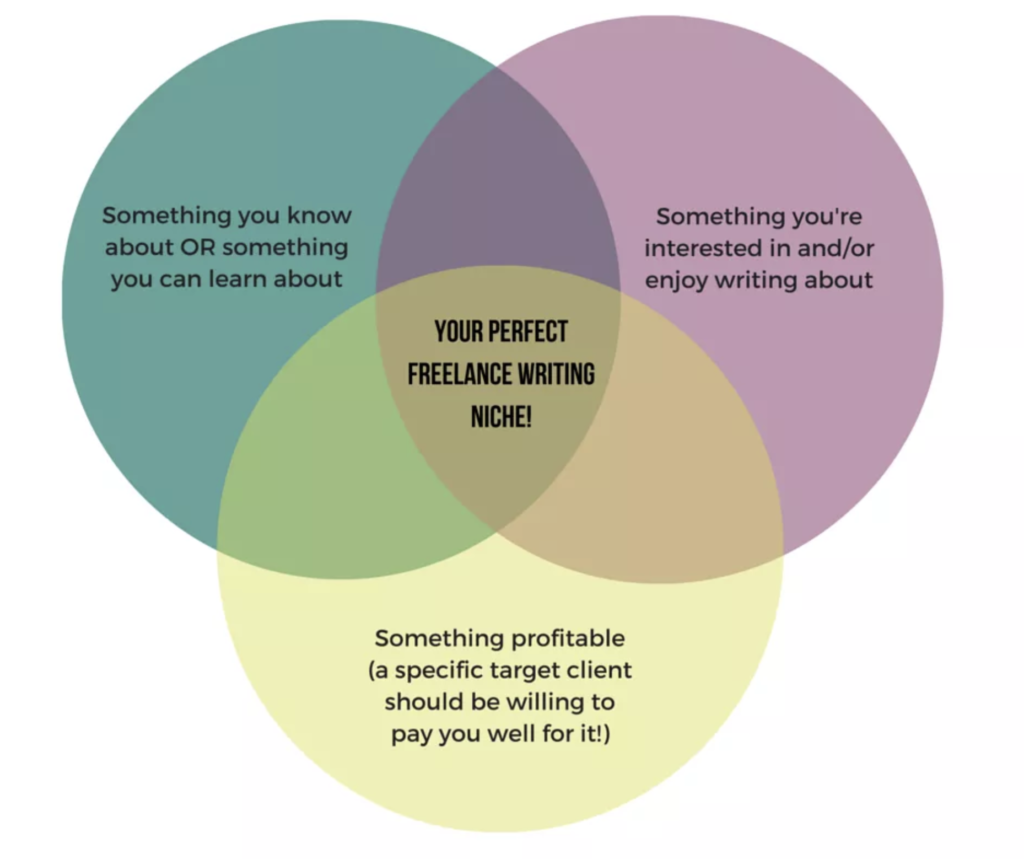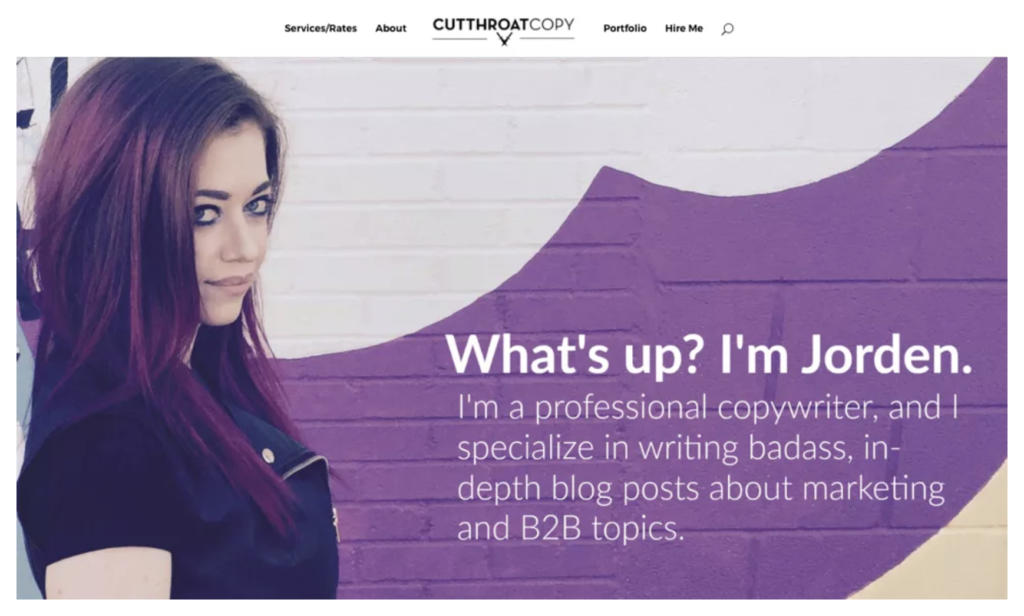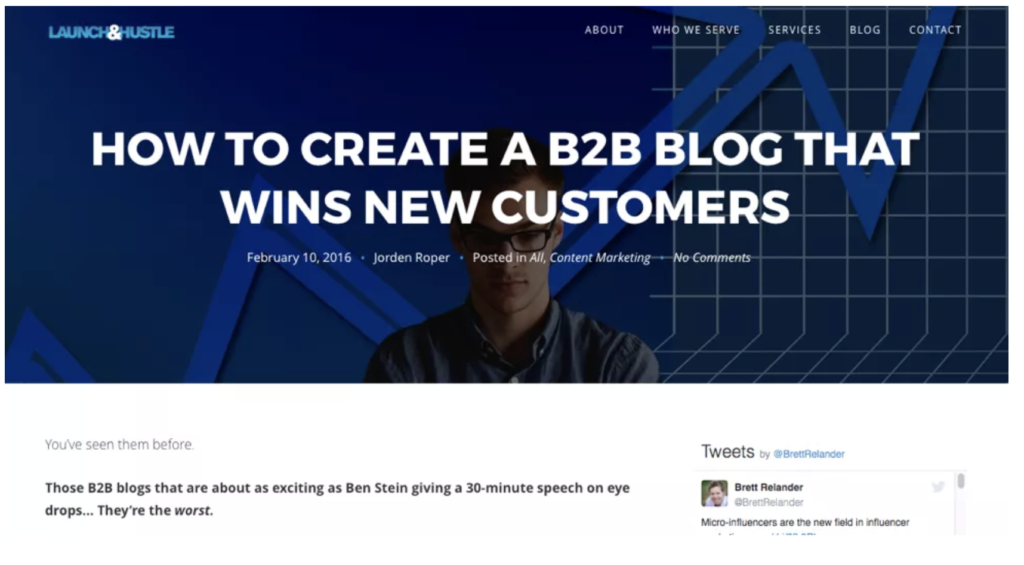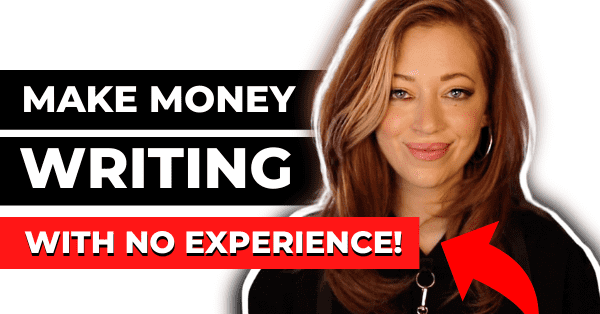So… you wanna to learn how to start freelance writing with NO experience in 2021?
Well, despite what you may have read elsewhere, you do NOT have to resort to shitty penny-per-word gigs just because you’re a beginner.
Now, I’m not saying you’ll necessarily be able to charge thousands per project from day one and become a millionaire in 6 months.
But what I AM saying is that you can make a good living writing online – without content mills, bidding sites, and pain-in-the-ass clients who try to talk you down to 5 cents per word.
…EVEN if this if your first time learning how to start freelance writing as a beginner, and you’re just setting a goal for 2021 to build your writing business.
…And success as a beginner with no experience is ALL about how you market and position yourself online.
(Which isn’t NEARLY as scary as it might sound!)
In today’s blog post, I’m going to teach you the exact steps to building a SUSTAINABLE, profitable freelance writing business.
This doesn’t involve Upwork or Fiverr. Or shitty content mills.
It involves you creating a real business that makes real business moo-lah, baby!

Me at Yosemite while traveling full-time in 2019 – something I have ONLY been able to do because I took the leap and went “all in” on starting a business, even when it was scary! I started my business as a broke, clueless beginner. If I can do it, you can too!
This is all stuff I learned from my experience building my freelance writing business up $5,000/mo within 4 months of getting fired from my full-time job + stuff I’ve learned teaching other freelance writers how to land clients.
Let’s get started, and along the way, I’ll share my best [free] resources on creating your portfolio, setting up your freelance writing business website, etc.
**Before we talk about how to start freelance writing, a quick announcement: My FREE class on how to make your first $1,000 freelance writing (even with NO experience!) is now open. 🙂 Join over 7,000 writers, and sign up for instant access to the free class right here!
HOW TO START FREELANCE WRITING WITH NO EXPERIENCE IN 2021: The ULTIMATE GUIDE!
STEP 1: GET YOUR MINDSET RIGHT
I know, I know. This seems like a cheesy/fluffy step.
And I can sense your eyeroll.
But HEAR ME OUT.
Before we get into the nitty-gritty, “how-to” stuff, you NEED to make sure your mind is right so you can attract high-paying clients.
More specifically, you need to make sure:
- You’re not so broke that you’ll take on ANY project.
- You view yourself as a business owner – not an employee who is desperate for work.
- You’re ready to work hard at first and invest in yourself, especially if you have no connections / no impressive portfolio, etc.
Why is this stuff so important?
Well, for one thing, if you’re broke as shit, you’ll put up with asshole clients.
You’ll take on one-penny-per-word Upwork and Fiverr “clients” because you NEED the money.
…And in the process, you’ll spend time on shitty projects when you’d be much better off spending that time working on a REAL, sustainable marketing plan that attracts high-paying, high-quality clients.
On the other hand, if you at least have a LITTLE money to invest upfront, you won’t take on shitty clients out of the fear of not being able to pay your bills.
Don’t get me wrong:
You don’t need to be rollin’ in the Benjamins to get started.
I sure as hell wasn’t. And I still dealt with a some money-related fears.
But I WAS willing to invest in basic business necessities like a custom domain name / nice website and to feel okay turning away lowballing, jerkface clients.

An example of what a client-winning freelance writing business website looks like. Click here for a step-by-step tutorial on how to set yours up (even if you aren’t tech-savvy, you got this!).
I wouldn’t have grown my business to $5,000/mo in 4 months if I had started out with a desperate mindset – in other words, if I had felt like I HAD to take on any and every client.
You won’t grow quickly that way either, so do you best to put yourself in a financial situation that allows you to turn away crappy clients.
When I started out after getting fired from my full-time job, I told my husband I would take on literally ANY shitty, part-time job near our apartment if that’s what I needed to do to have money to invest in my business.
Fortunately, it never came to that because I worked my ass off and went into growing my business with a clear marketing strategy.
But I totally would’ve done it – it’s all about having that business owner mindset and understanding the need to do whatever it takes to invest in yourself and treat freelance writing like a BUSINESS!

This free class will teach you the EXACT process I used to make my first $1,000 freelance writing. Click and open it in a new tab so you can take it after you’re done reading this blog post! 🙂
STEP 2: FIGURE OUT WHAT YOU DO (AKA YOUR NICHE/SPECIALTY!).
I could talk for literally HOURS about the importance of picking a niche (AKA an area to specialize in).
If you’re not familiar with the term “niche,” here are some examples of niche writers:
- Whitepaper writer – This writer has niched down by TYPE of content.
- B2B writer – This writer has niched down by INDUSTRY.
- Finance blog post writer – This writer has niched down by industry AND content type.
Choosing a niche just means you’re not a generalist.
These approaches can all be good options. Just make sure you choose something!
Why?
Because high-paying clients – AKA the clients you WANT! – do not want to work with generalists.
They want to work with niche specialists.
I mean, put yourself in a client’s shoes. If you’re a dental office with a big-ass marketing budget, are you going to hire a “professional dental writer” or a “freelance writer” to create your content?
You’ll hire the dental writer. Because the way they position their expertise in your industry builds a hell of a lot of trust with you.
Let me tell you – I would NOT have grown my business to $5K/mo in 4 months if I had marketed myself as a generalist.
Clients MUST trust you before they’ll work with you. As a newbie, I didn’t have common trust-building assets like testimonials, awesome bylines, etc.
But what I DID have was a clear niche – IT and Tech Writing – and that made all of the difference in building trust with clients to the point where they hired me.
So, my friend:
This will help:

And remember, the niching process takes trial and error!
Your niche may change – mine did many times.
The best thing you can do is jump the fuck in with your best educated guess as to what your ideal niche is going to be. Don’t waste time trying to get it 100% perfect from the start.
If you need help choosing your freelance writing niche, my free class has an entire section dedicated to choosing your niche (click here to sign up!).
To add on to the niching down tips in that post:
- Go with something that fits your natural abilities. For example, I figured out early on that anything too technical was miserable for me – and I sucked at it. I liked casual, conversational writing, and it’s what I’m best at, so I chose blog post writing.
- Balance passion and profitability. If your main goal is to make a full-time income quickly, it may be best to go with a more traditionally profitable niche that targets businesses with lots of money in their marketing budget. However, if you’re okay taking your time to build your business and are more concerned about enjoying your work, go with your passion niche. Not saying your passion niche isn’t going to be profitable – it might be! Just trying to make sure you go into this with realistic expectations, ya know?
- Market the SHIT out of your niche. EVERYWHERE. In your guest post bios. On your website in a gigantic headline. On social media. Everywhere.
Alright, now you’ve got your niche.
Let’s talk about the next step – one that many, many freelance writers (including me when I was a newbie!) overlook.
STEP 3: FIGURE OUT WHO YOU HELP
Once you pick your niche, figure out who the profitable clientele is in that niche. This is a KEY step in learning how to start freelance writing the RIGHT way and building your business!
Keep in mind that figuring out who your ideal target clientele is can take time. It can take weeks – or MONTHS – of trial and error.
It’s probably not something you’re going to know right from the start.
Again here, it’s best to just jump in and learn as you go. (Which is what I did, and it took me months to figure out the ideal clientele I wanted to work with!)
Don’t feel like you need to get everything 100% right from the start!
…Now that we’ve made that clear, let’s explore why knowing your clientele is so important.
Say you’ve decided to become a finance blog post writer.
Awesome! You’ve niched down by content type AND industry.
But wait a second… who exactly are you going to write for?
What kinds of businesses should you be pitching your services to?
You do a little research, and come up with these two potential target clienteles:
- Small personal finance bloggers
- Finance software businesses
Which of these types of clients do you think is going to be more profitable?
To help you answer this, keep in mind that a profitable target clientele is a clientele that:
- Values the kind of content you create (meaning that they use that content to drive revenue/results for their business)
- Has the budget to pay you well for your work (pretty straightforward, but this does take trial and error to figure out sometimes!)
With that in mind, we can guess that large finance software businesses that have active blogs – think Quickbooks (disclaimer: I’m not being literal here… I’ve never worked with them and don’t know their budget) – are probably going to be a more profitable clientele for finance bloggers.
While small personal finance bloggers value the type of content you create, they may not have the budget to pay you hundreds of dollars per blog post if they’re a one-person business.
Now, keep in mind that I’m generalizing here.
Some bigger businesses have a shit budget, and some tiny businesses have an awesome budget (speaking from experience, one my of best clients ever was a start-up with a team of a couple people!).
Make the best decision you can, and remember, you can always change things up later if you find that the clientele you’re targeting usually can’t afford you!
Now, it’s time for you to…
STEP 4: SET UP A FREELANCE WRITER WEBSITE THAT SELLS
Before we talk website tips, I’m going to say this again:
It’s best to jump in and improve as you go.
Do NOT spend months perfecting your site. Seriously.
Because it will never be perfect. And the more time you waste on silly shit like ~*the perfect logo*~, the longer you’re going to go without landing clients.
And those other freelance writers who had the balls (or ovaries!) to put up their imperfect site? They’ll be landing YOUR potential clients while you fuck around with your logo.
Whew. Okay.
Now that that’s out of the way… 🙂
(I have to say it over and over because, let’s face it – probably the #1 thing that ACTUALLY holds writers back is fear-based procrastination. Not lack of knowledge/information.)
Let talk about how to create a website that sells.
First, here’s a link to a step-by-step tech tutorial on how to set up your freelance writer website in ONE day. Click it:
How to Set Up Your Freelance Writer Website in One Day Or Less (Tech Tutorial!)
(By the way, ^^ that blog post includes my link for you to get a FREE domain for your site and a hosting discount. SCORE.)
Head over to that blog post to learn how to set up your site, what pages go on your site, etc.

My freelance writer website was KEY to me building a $5K/mo freelance writing business in 4 months after I got fired! Click here to set up yours quickly and easily.
As far as how to make sure your site SELLS, here are some of my best tips:
- Put your niche in a big-ass headline. The point of this is to let potential clients know that you specialize in the EXACT type of content they need. If you put it above the fold on your site, they’ll know immediately! Just like in the example above.
- Tailor everything to your target clientele. Figure out your target clients’ business needs, wants, goals etc. Then, figure out how the type of content you write helps them with that stuff, and use that information to write your website copy so that it sells. This takes time, remember, so you should do your best at first and improve your website as you learn more about your target clients!
- Make sure it’s EASY for potential clients to contact you, no matter what page they’re on. Seriously – don’t be that writer whose email address/contact form is virtually impossible to find. Ideally, the client should be one click or scroll away from being able to contact you at ANY time. This is why I recommend putting a “Contact” button in your navigation bar.
REMEMBER:
NO EXCUSES! Read and get it done.
And, bonus tip, add any social proof you have to your site.
If you’ve ever worked with big-name companies (even full-time!), put their logo in a “companies I’ve worked with” section on your site to build trust.
If you have testimonials, put them on multiple pages of your site.
One more bonus tip:
Think of your home page as a SALES PAGE, not a place to drone on about yourself and how much you love writing.
If that sounds harsh, well… it kinda IS.
…But I’m only blunt like this because I want you to land clients, and you won’t land clients talking about yourself and your love for writing on your homepage!
STEP 5: CREATE YOUR NICHE PORTFOLIO PIECES.
Have you noticed the pattern here?
Your marketing strategy is going to be a LOT more effective if you tailor everything to one niche.
It goes back to putting yourself into a client’s shoes.
If you’re hiring a writer at a dental office and you have a big budget, you’re going to look for a dental writer.
So, once you’ve tailored your website to your niche, you need to create some niche portfolio pieces / writing samples.
For example, if you decide to become a finance blogger, you’d want to write some finance-related blog posts to position your expertise to your target clients.

A guest post I wrote as a sample when my niche was “B2B blog posts.” This was a very niche-relevant piece that showcased my expertise to that specific audience.
And if you decide to become a tech whitepaper writer, you could write a whitepaper *or* a blog post teaching something about whitepapers to technology businesses.
(In other words, don’t feel like you have to have an exact sample of the kind of content you want to write for your target clients!)
STEP 6: PITCH AND COLD EMAIL YOUR ASS OFF.
You’ve decided on a niche. You’ve set up the first version of your freelance writer website. You’ve got a couple of niche writing samples.
Now, my friend, it’s time to start pitching and cold emailing your target clients!
So, what exactly IS pitching? And what is cold emailing?
Effective pitching means using high-quality job boards to find gigs in your niche, then reaching out the the job poster to sell them on why they should hire you.
Effective cold emailing means sending a tailored, strategic email to a target client in your niche. The entire email should work together to build trust with them and make it easy for them to say “YES!” to your call to action at the end.
NOTE: Sometimes,”cold emailing” and “pitching” are used interchangeably. But on my blog, I use “pitching” in the sense of sending a pitch to a site/business who is calling for pitches, like on a job board, while cold emailing could be reaching out to any business (even if they aren’t saying that they’re seeking writers online anywhere / they aren’t actively seeking pitches).
Note: I don’t recommend job boards as a long-term strategy.
But if you NEED to use them at first, that’s cool.
Whatever you do, do NOT use content mills, Fiverr, or shitty bidding sites like Upwork!
I know it’s tempting, but the whole point of starting a business is to make money and grow a career on your own terms – not the terms of some crappy platform full of lowballing “clients.”
And remember, you want to focus most of your efforts on landing clients independently, even with high-quality job boards.
My #1 method for landing clients independently as a newbie freelance writer?
Cold emailing.
(Click here to get the exact cold emailing process I used to make $800 freelance writing FAST!)
Now, to be clear, cold emailing is NOT sending out some shitty templated email to the same big-ass list of people.
The first day I cold emailed as a beginner freelance writer, I sent a total of 17 emails.
I landed TWO clients from just that one day/batch of cold emails!
I couldn’t believe it.
Like, they REALLY wanted to hire me – a recently-fired college dropout!?
But looking back, I know why this happened.
Two reasons:
- I used a niche marketing strategy for everything – from my website to my social media profiles to my cold emails. (This is something I teach in my Killer Cold Emailing course for freelance writers.)
- I used my cold emails to sell potential clients on my value. (Also something I teach in my Killer Cold Emailing course for freelance writers!)
I’m so passionate about teaching freelance writers cold emailing because it was a HUGE game-changer for me and the ONE strategy that allowed me to grow a business MY way.
I made over $1,000 in my first month as a full-time freelance writer – over $800 of that was JUST from the clients I had cold emailed.

So, make sure you get out there and cold email effectively using a proven process.
…But only AFTER you have a clear marketing strategy and a website if you want the best results!
Ready to get a clear, proven, step-by-step marketing strategy so you know exactly how to start freelance writing with no experience (and grow your writing biz in 2021 like crazy)!?
Over 7,000 writers have taken it, and many have landed PAID CLIENT WORK simply after implementing what they learned.
The information is right there…
All you’ve gotta do is reach out and grab it. (AKA click the link above!) 🙂
See you there!


